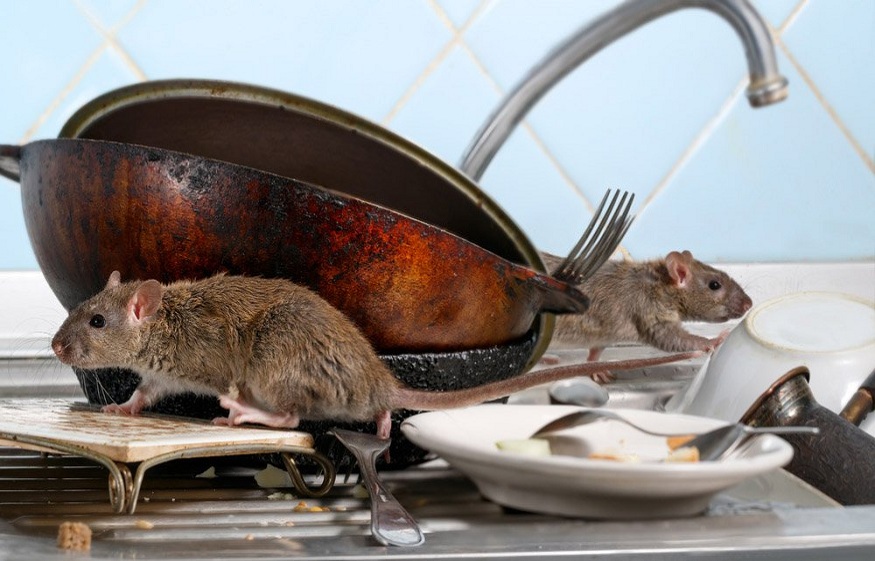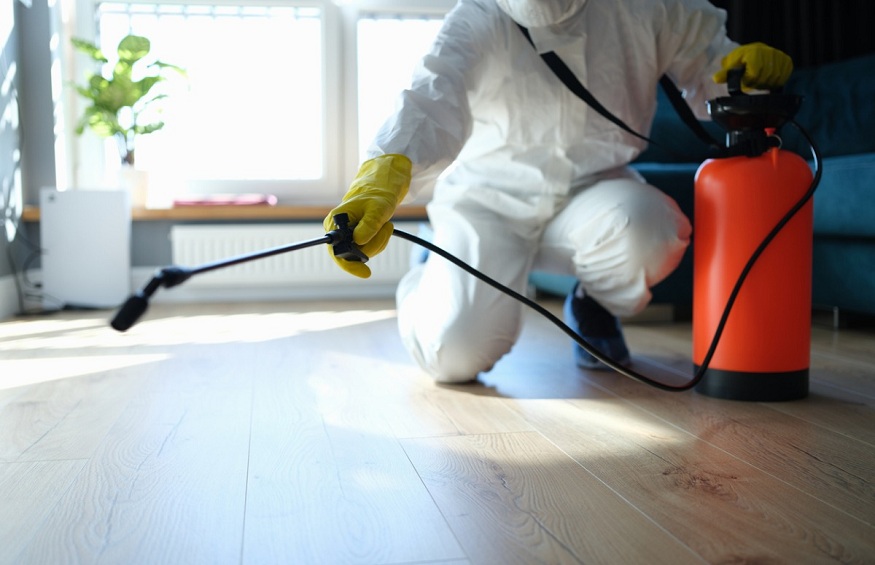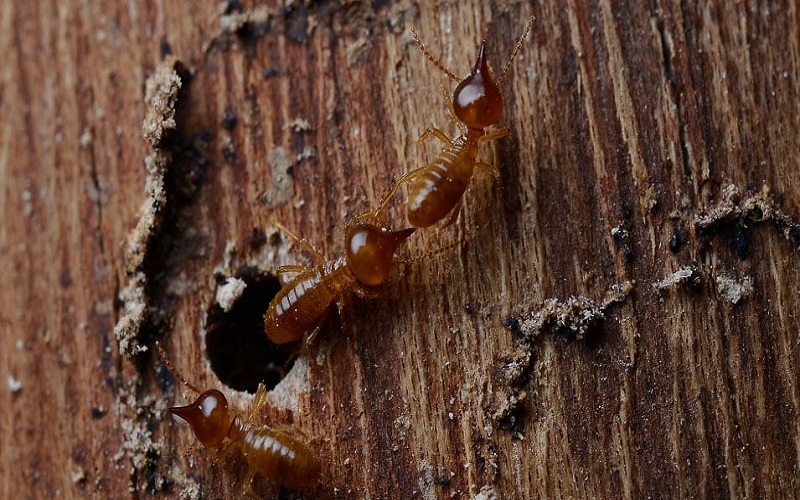Rats often hide in dark, unreachable places, making them difficult to spot until a larger infestation has occurred.
To manage or prevent this, it’s crucial to understand their nesting patterns. Knowing their usual hiding areas and behaviours can enable you to create a more successful rat extermination strategy, even if you have little to no experience dealing with them.
Let’s explore the topic in detail below!
Why Rats Nest in Your Home
Like most animals, rats search for food, water, and shelter. Unfortunately, our homes provide all these in abundance.
Whether your attic provides cosiness or the wetness of a broken pipe, rats will take advantage of it. They use any concealed spot, like the security of a neglected storage box in the garage, that offers refuge from predators.
Furthermore, food is the main reason rats are attracted to homes. Crumbs on the kitchen floor, unsecured rubbish, and improperly sealed cupboard items act as an open buffet.
Once rats find a consistent food source, they look for a nearby nesting spot, usually staying close to scavenge at night.
Water is another major reason rats come indoors. Leaky pipes, standing water, and pet water dishes left out overnight attract them easily.
Once inside, rats will use your home as a safe haven for breeding, which leads to a growing infestation that becomes harder to eliminate.
Common Places Where Rats Hide
Rats are remarkably resourceful when it comes to finding hiding spots. Being nocturnal and avoiding human contact, they prefer dark, quiet areas free from daily disturbances.
Here are some common places where rats can establish their nests:
Attics
Attics provide ideal nesting conditions for rats. Old boxes, insulation, and other materials offer plenty of nesting supplies.
With most attics rarely visited, they become perfect hiding spots. In winter, the warmth of an attic creates a suitable environment for rats to thrive and breed.
Moreover, rodent nesting in attics can cause serious damage by gnawing through insulation, wires, and wooden beams.
Rats chewing on wires can start electrical fires, posing a significant risk if left unchecked. Thus, regular attic inspections help detect infestations early, and professional rat removal services can ensure safe and effective removal.
Crawl Spaces and Basements
Rats like basements and crawl areas quite a bit. Those looking for a nesting place find these usually dark, moist, and cluttered environments attractive. They have easy access through open entry points, fractures, or gaps in basements.
Being closer to the ground and having direct access to any exterior environment, crawl spaces allow them to move in and out undetected.
Rats often nest using materials like cloth, insulation, or cardboard. Scratching sounds from below can mean they’re burrowing under your floorboards.
When this happens, it’s vital to call a rat removal specialist to inspect and block any access points.
Walls
Walls present a challenging hiding spot for rodents. Once inside, rats quickly find quiet, hidden spots to nest. They slip through tiny cracks or holes, making walls their perfect refuge, where they can live undisturbed for long periods.
You can be unaware of rats in your walls until the problem becomes more severe. Warning signs include noises at night, small holes, or the smell of droppings.
Hence, eliminating rats from walls requires expert techniques, as accessing their nests can be difficult. Professionals will not only locate the nests but also seal entry points to prevent further infestations.
Pantries and Kitchens
As opportunistic scavengers, rats find kitchens highly attractive. Though they’re less likely to nest there, they frequently hide in places like under kitchen appliances or inside pantries.
Open food containers, pet food left out overnight, and unattended crumbs offer easy meals for rats. Once inside, they seek nearby quiet, cosy spots to nest.
Therefore, regular kitchen cleaning, airtight food storage, and securing rubbish bins are essential to keep rats out of your kitchen.
How to Detect a Rat Nest
Finding a rat nest can be tricky since these creatures are masters of concealment. However, a few key signs suggest their presence.
Rat droppings are the first one. They are one of the clearest signs of an infestation. You’ll often find these small, dark, pellet-shaped faeces near food sources. Alternately, also along walls where rats travel.
The more droppings you find, the more severe the infestation is likely to be.
Gnaw marks are another clear sign. Rats constantly chew to keep their teeth sharp, so look for damage to walls, furniture, or wiring. Shredded paper, fabric, or insulation can also indicate that rats are building nests.
If you hear scratching or scurrying sounds at night, particularly in attics or beneath floorboards, know you have a rat issue at your hands.
Rodents are nocturnal, making them most active when the house is quiet. In areas where rodents are nesting, an unpleasant odour can arise over time. Their droppings, urine, and rotting food can generate foul smells that linger.
Effective Rat Removal
Once you have verified that rats are in your house, you must act right once to avoid any further harm. Although DIY techniques such as poison or trap placement provide a temporary fix, they usually neglect the root cause.
Contacting professional removal services is the most effective way to eliminate rats and prevent their return. Experts will inspect your home to identify access points and nesting areas.
To remove the rats and stop future infestations, they’ll use techniques such as baiting, trapping, and sealing. This can involve sealing vents, filling foundation cracks, or blocking other potential entry points.
Thorough cleaning is essential after removing the rats, as their nests contain harmful bacteria and debris that can seriously impact your health.
In addition to removing the rats, professional services effectively clean your home, eliminating any potential hazards.
Preventing Rats from Nesting in Your Home
Stopping rats from returning requires preventative measures. One of the simplest ways to deter rats from nesting is by keeping your home clutter-free and clean.
Similarly, regular inspections of crawl spaces, basements, and attics help identify early signs of rats.
The first step is to seal potential entry points. Repair gaps in your floors, walls, and foundation. Ensure vents, doors, and windows are secure.
Eliminating food sources is equally important, hence storing food in sealed containers, cleaning up spills immediately, and regularly taking out the rubbish.
Conclusion
No matter where you live, once rats gain entrance, they will find a way to hide. Understanding where they typically nest allows you to act early and prevent a full-blown disaster.
Your best defences against a rat invasion are routine inspections, cleanliness, and contacting qualified rat removal companies. Ultimately, that’s what’s going to keep your abode rodent-free, neat, and safe. Remember to act promptly and never delay dealing with the issue when you notice it.




